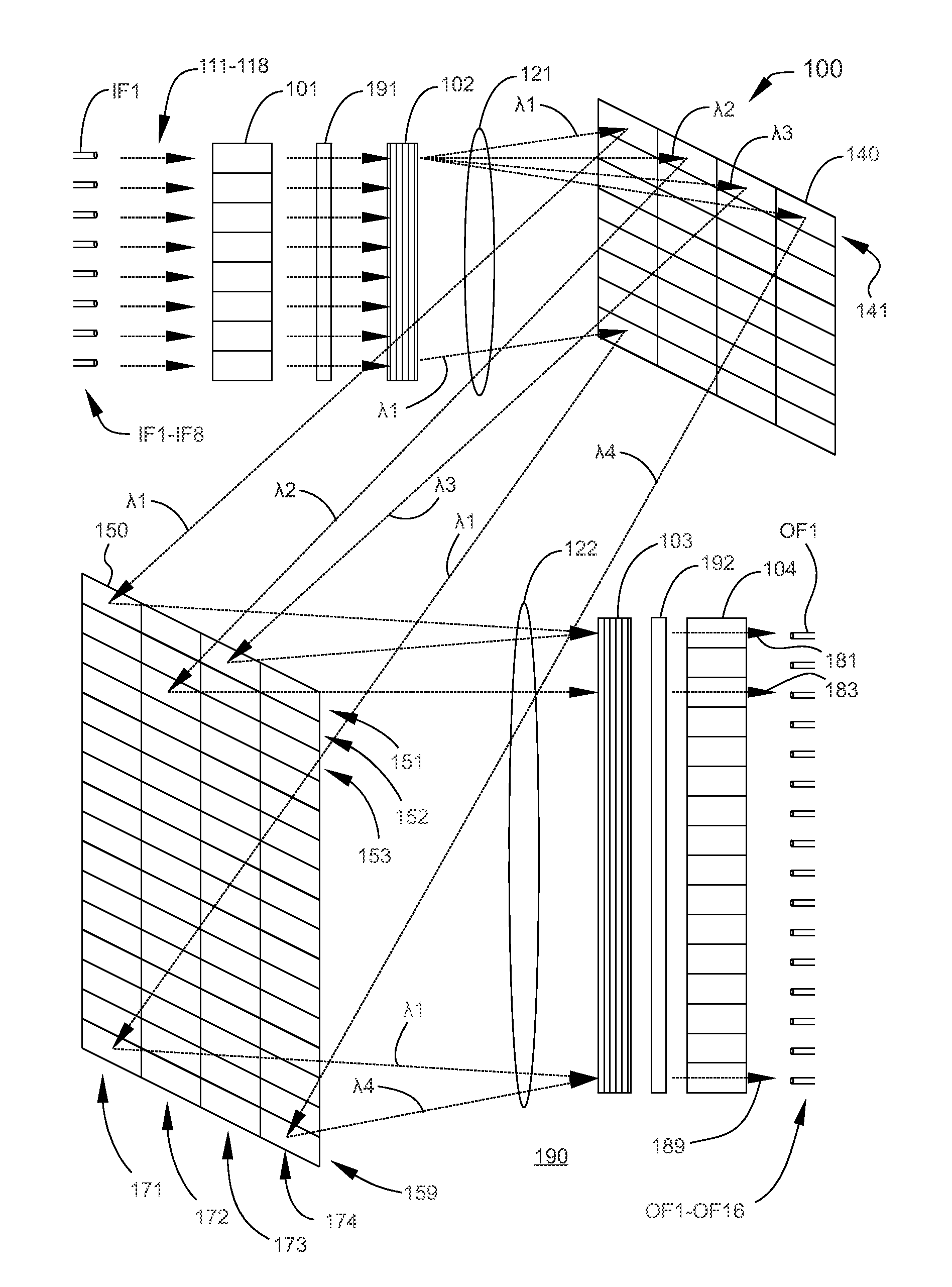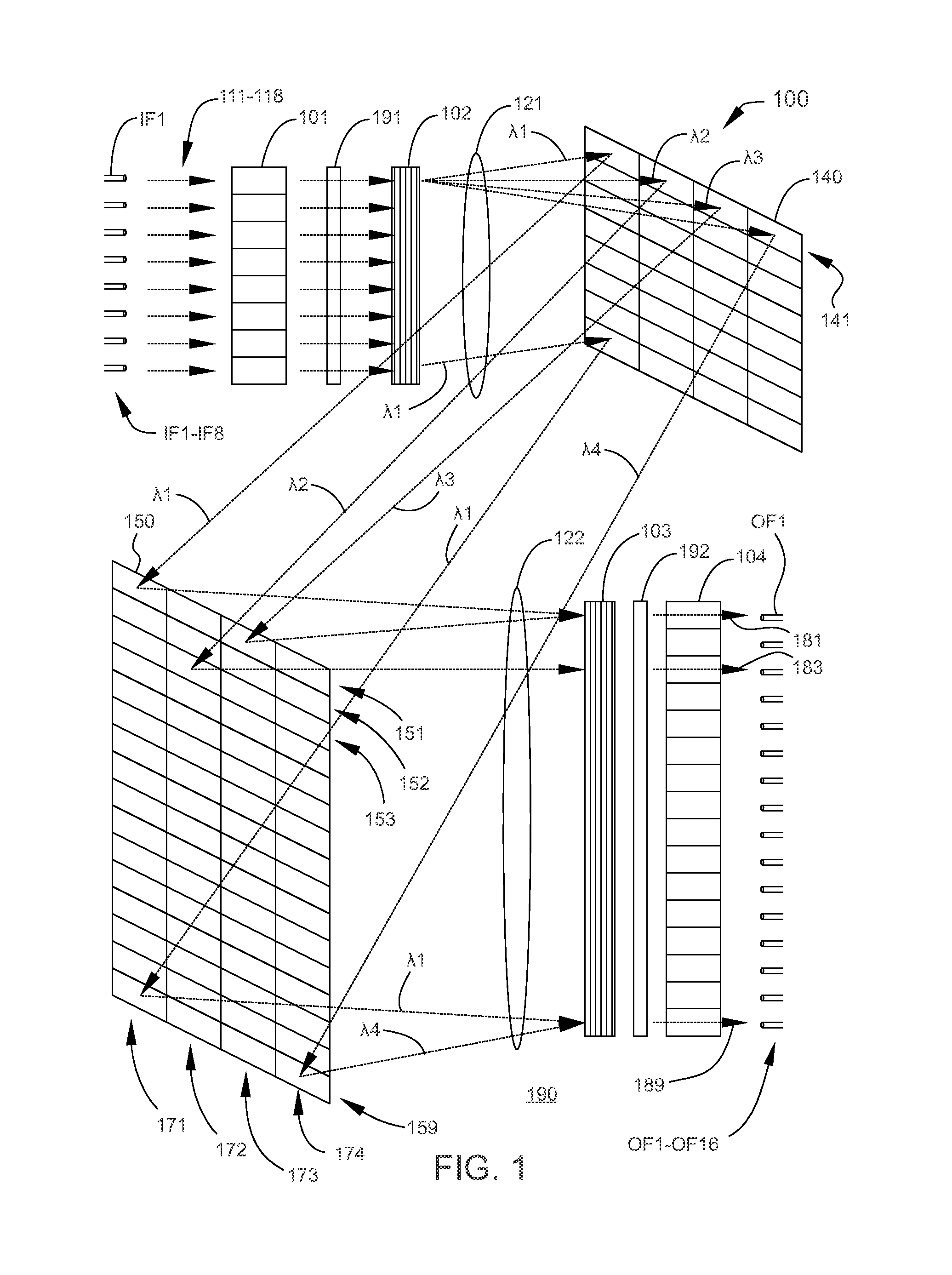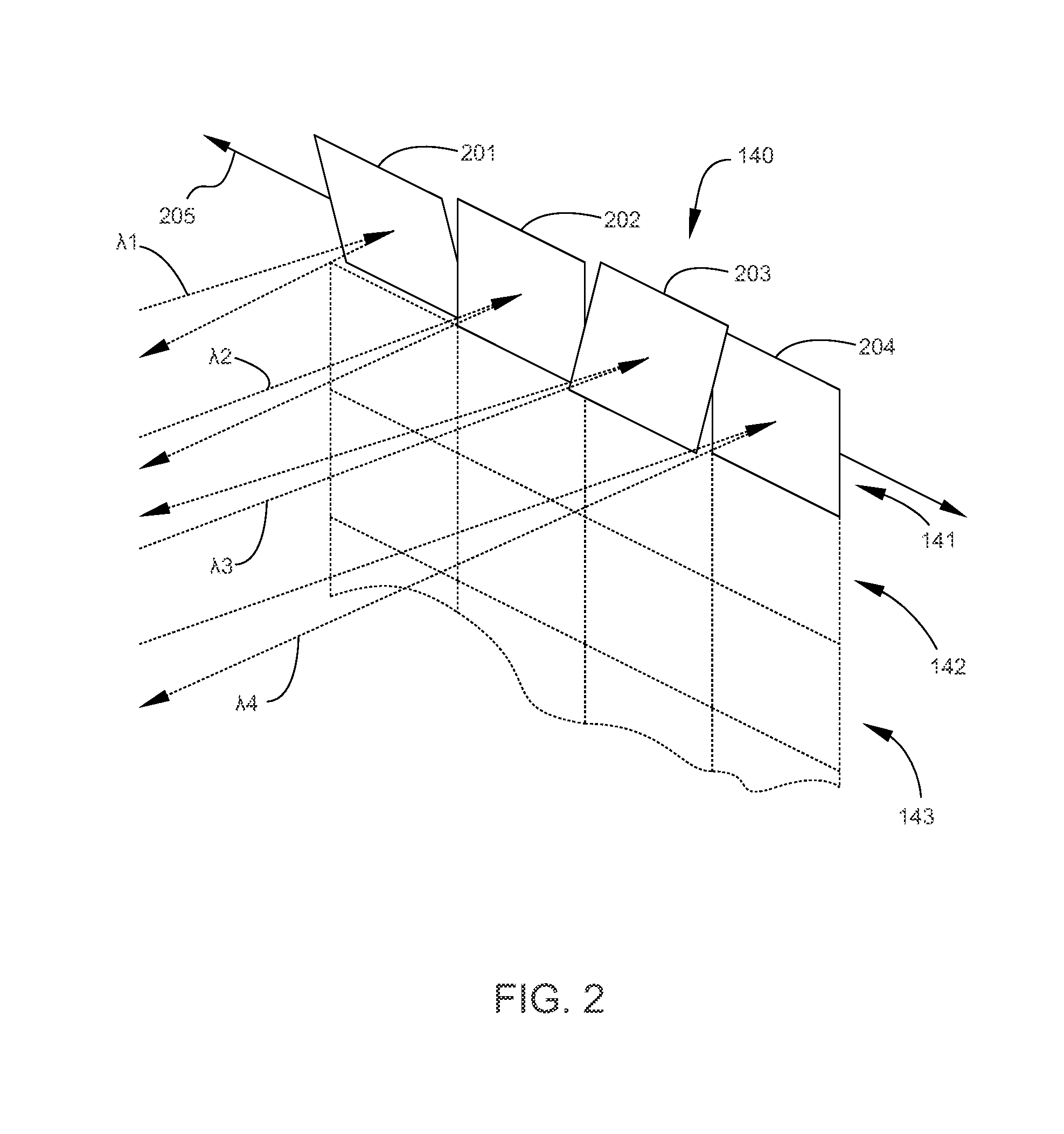Wavelength Selective Switch
a selective switch and wavelength technology, applied in the field of optical communication systems and components, can solve the problems of undesirable device production by arraying a plurality of complex 1n optical switching devices for wdm communication systems,
- Summary
- Abstract
- Description
- Claims
- Application Information
AI Technical Summary
Benefits of technology
Problems solved by technology
Method used
Image
Examples
Embodiment Construction
[0025]FIG. 1 schematically illustrates a perspective view of a wavelength selective switch (WSS) 100 with M×N wavelength-independent switching capability, according to an embodiment of the invention. WSS 100 is configured to provide wavelength-independent switching for each of the k wavelength components propagating through each of M input fibers to any of N output fibers. In the illustrative embodiment illustrated in FIG. 1, WSS 100 is configured for wavelength-independent switching of the k wavelength components in each of eight input fibers IF1-IF8 to any of 16 output fibers OF1-OF16. One of skill in the art, upon reading the disclosure herein, can readily devise other configurations of WSS, such as a 16×16 WSS, a 16×8 WSS, etc. Input beams 111-118 are independent WDM optical signals that contain a plurality of wavelength components, propagate from input fibers IF1-IF8, respectively, and are each optically coupled to WSS 100. For clarity, the number of wavelength components, k, f...
PUM
 Login to View More
Login to View More Abstract
Description
Claims
Application Information
 Login to View More
Login to View More - R&D
- Intellectual Property
- Life Sciences
- Materials
- Tech Scout
- Unparalleled Data Quality
- Higher Quality Content
- 60% Fewer Hallucinations
Browse by: Latest US Patents, China's latest patents, Technical Efficacy Thesaurus, Application Domain, Technology Topic, Popular Technical Reports.
© 2025 PatSnap. All rights reserved.Legal|Privacy policy|Modern Slavery Act Transparency Statement|Sitemap|About US| Contact US: help@patsnap.com



